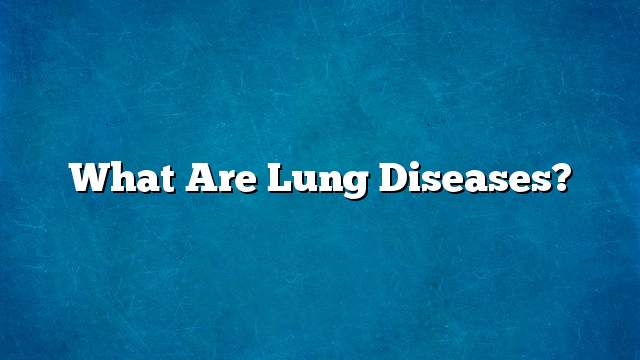Lung diseases are some of the most common medical conditions in the world, and lung diseases indicate disorders that affect the lungs and organs that allow us to breathe. The lungs are part of the respiratory system that plays its role in expanding and relaxing thousands of times each day to bring oxygen and expel a second Carbon dioxide through the process of inhalation and exhalation. If lung disease can be caused by problems in any part of this respiratory system.
And respiratory problems caused by lung diseases may prevent the body to get enough oxygen There are examples of many lung diseases and we deal with lung diseases caused by bronchitis and bronchial tubes are bronchial tubes, which are tubes which in turn are branches of transport Air to become gradually smaller tubes covering all over the lungs.
Pulmonary diseases affecting the airways include:
Asthma or asthma: It is a persistent inflammation of the bronchial tubes sometimes may cause spasm causing wheezing and shortness of breath, exposure to allergies and pollution is one of the most common causes of asthma symptoms.
Chronic obstructive pulmonary disease (COPD): This is what affects the lung in the inability to exhale normally, causing difficulty breathing.
Chronic bronchitis: It is a form of chronic obstructive pulmonary disease but is characterized by chronic cough.
Emphysema: Lung damage is the case of exhalation where the exhalation of the air at the exhalation is difficult to exit due to inflamed alveoli, and smoking is the usual cause.
Acute bronchitis: It is a sudden bronchitis usually caused by a virus.
Cystic fibrosis: a genetic condition and is difficult to rid the mucus of the airways, and as a result of this accumulated mucus causes inflammation of the lung.
Pulmonary diseases affecting the alveoli (air bags)
The bronchial tubes are eventually fading and ending in small tubes that block the airways in a dead end in groups of alveoli called the alveoli. These alveoli form most of the lung tissue. Pneumonia affects the alveoli, including:
Pneumonia: The term inflammation of the alveoli and usually the path of bacteria.
Tuberculosis: It is pneumonia caused by Mycobacterium tuberculosis.
Pulmonary edema: It is the leakage of fluid from small blood vessels in the lung to the alveoli and the surrounding area. It is caused by heart failure and back pressure in the blood vessels in the lungs.
Lung cancer: A split in cells can develop in any part of the lungs. Most often it is in the main part of the lung or near the alveoli.
Acute Respiratory Syndrome (ARDS): Sudden lung injury caused by shortness of breath. Usually the need to use mechanical ventilation is called to survive until the lungs recover.
Pneumonia: There is a class of conditions caused by the inhalation of a substance that harms the lungs. Examples of this include black lung disease from inhaling coal dust and the inhalation of asbestos dust.
Interstitial lung disease
Interstitial is a microscopic thinness that is the sensitive lining between the alveoli in the lungs and small blood vessels through interstitial activation that allows the exchange of gases between the alveoli and blood. Various lung diseases that affect the interstitial:
Interstitial Lung Disease (ILD): It is a wide range of conditions that affect interstitial lung. Sarcoid, and idiopathic pulmonary fibrosis, autoimmune diseases are among many types of ILD, and pulmonary infections can also affect and cause interstitial swelling.
